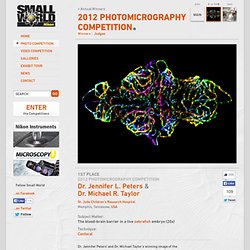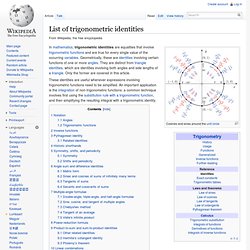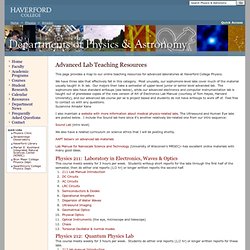

The blood-brain barrier in a live zebrafish embryo. Dr.

Jennifer Peters’ and Dr. Michael Taylor’s winning image of the blood-brain barrier in a live zebrafish embryo perfectly demonstrates the intersection of art and science that drives the Nikon Small World Competition. The blood-brain barrier plays a critical role in neurological function and disease. Drs. Peters and Taylor, developed a transgenic zebrafish to visualize the development of this structure in a live specimen. To achieve this image, Peters and Taylor used a maximum intensity projection of a series of images acquired in the z plane. Both Peters and Taylor have more than ten years of imaging experience. 60 Ways RAND Has Made a Difference. In 2008, the RAND Corporation celebrated its 60th anniversary.

The difference between RAND today and the organization that was created in 1948 is substantial and dramatic. Most notably, we started with one client — the U.S. Air Force. Over the past six decades, we've enjoyed productive relationships with thousands of clients. Today, RAND's analytic expertise is uniquely broad: Sixty Ways RAND Has Made a Difference illustrates some of the countless ways that RAND has helped to improve policy and decisionmaking in education, health care, civil and criminal justice, science and technology, national security, and other areas of concern — in the United States and throughout the world.
List of trigonometric identities. These identities are useful whenever expressions involving trigonometric functions need to be simplified.

An important application is the integration of non-trigonometric functions: a common technique involves first using the substitution rule with a trigonometric function, and then simplifying the resulting integral with a trigonometric identity. Notation[edit] Angles[edit] 1 full circle = 360 degrees = 2 radians = 400 grads. The following table shows the conversions for some common angles: Unless otherwise specified, all angles in this article are assumed to be in radians, but angles ending in a degree symbol (°) are in degrees. Trigonometric functions[edit]
Rader's NUMBERNUT.COM. National Center for Case Study Teaching in Science (NCCSTS) Neuroscience For Kids. The smell of a flower - The memory of a walk in the park - The pain of stepping on a nail.

These experiences are made possible by the 3 pounds of tissue in our heads...the BRAIN!! Neuroscience for Kids has been created for all students and teachers who would like to learn about the nervous system. Making Science Visible. NanoHUB.org - Simulation, Education, and Community for Nanotechnology. STEM Education Resource Center. Welcome to PBS Teachers STEM Education Resource Center!

Science, Technology, Engineering and Math (STEM) Resources for Grades PreK-12 PBS offers all Americans the opportunity to explore new ideas and new worlds related to science, technology, engineering, and mathematics (STEM) learning through television and online content. On-line broadband access and digital media are dramatically changing the opportunities available to the nation’s educators improving STEM education. Our recent national educator survey (Grunwald, 2009) indicates that more teachers than ever before are turning to digital media resources to help their students understand concepts, practice new skills and engage in exciting, authentic learning experiences. Explore some of our great STEM offerings for grades PreK-12. NOVA Science Now: The Secret Life of Scientists, "Becoming the Professor". The PBS Teachers STEM Education Resource Center is here to introduce you to selected STEM education resources. <Advanced Lab Teaching Resources>
This page provides a map to our online teaching resources for advanced laboratories at Haverford College Physics.

We have three labs that effectively fall in this category. Most unusally, our sophomore-level labs cover much of the material usually taught in Jr. lab. Our majors then take a semester of upper-level junior or senior level advanded lab. The sophomore labs have standard writeups (see below), while our advanced electronics and computer instrumentation lab is taught out of prerelease copies of the new version of Art of Electronics Lab Manual (courtesy of Tom Hayes, Harvard University), and our advanced lab course per se is project based and students do not have writeups to work off of.
Feel free to contact us with any questions. MathDL: The MAA Mathematical Sciences Digital Library. The Physics Classroom. CIENCIAnet. Proyecto Alquimia: Ciencias, Geografía e Historia para Educación Primaria.